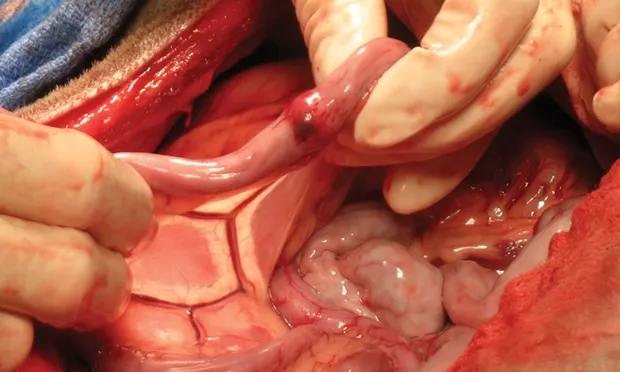Surgical Treatment for Bite Wounds
Bonnie Grambow Campbell, DVM, PhD, DACVS, Washington State University

This step-by-step outline on the surgical treatment of canine bite wounds supplements the Consultant on Call Bite Wounds, which reviews and describes details and tips on presentation, medications, and follow-up.
Bite wounds, a common emergency presentation, can often be deceiving. When treating canine bite victims, it is important to consider the iceberg effect, in which minimal surface damage may disguise expansive damage underneath the skin. Patients that appear stable at initial presentation may present days later with systemic inflammatory response syndrome (SIRS) or sepsis.
Step-by-Step: Surgical Treatment for Bite Wounds
What You Will Need
Sterile surgical cap, mask, gown, and gloves
Clippers
Sterile water-soluble gel (to place on wounds while clipping)
Surgical scrub and gauze for periwound skin
0.05% chlorhexidine solution in an IV bag
Pressure cuff for IV bag
IV administration set
22–16-gauge needle
Sterile towels and drape
Sterile instruments
Towel clamps
Scalpel handle and blades (#10, #15)
Hemostats
Thumb forceps
Metzenbaum and Mayo scissors
Needle holder
Suture scissors
Assorted suture material
Polydioxanone (3-0, 2-0)
Nylon (4-0, 3-0)
Poliglecaprone 25 (4-0, 3-0)
Moisture-retentive dressing
Bandaging material
Anesthetics and analgesics
IV fluids
Antibiotics
Culturettes for aerobes and anaerobes

STEP 1
Always wear gloves when working around a wound. Prepare a large area for surgery, as tissue damage is commonly more widespread in the deeper aspect of the bite wound than on the surface. Administer time-dependent antibiotics (eg, cephalosporins, augmented penicillins) IV q90min during surgery.
FIGURE 1 A 1-year-old Maltese presented with bite wounds on its dorsal thorax. The entire thorax was clipped and scrubbed bilaterally. A puncture wound is being opened with a pair of Mayo scissors.
SIRS = systemic inflammatory response syndrome